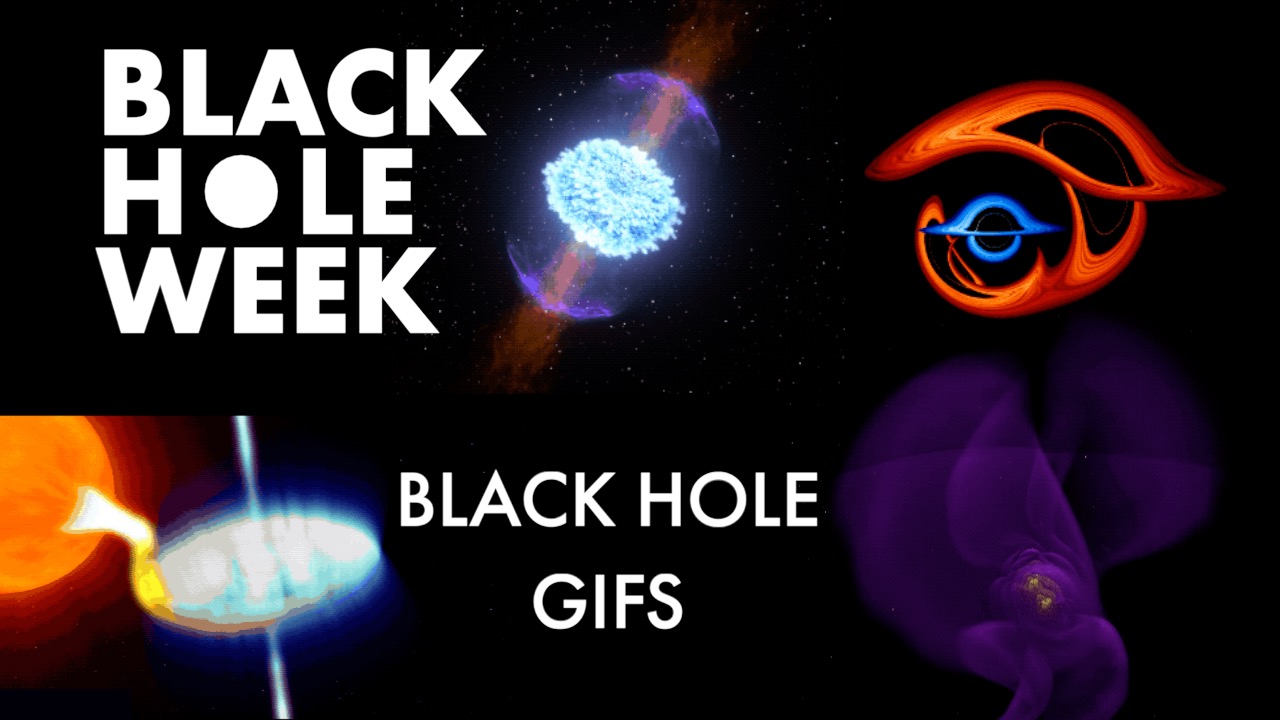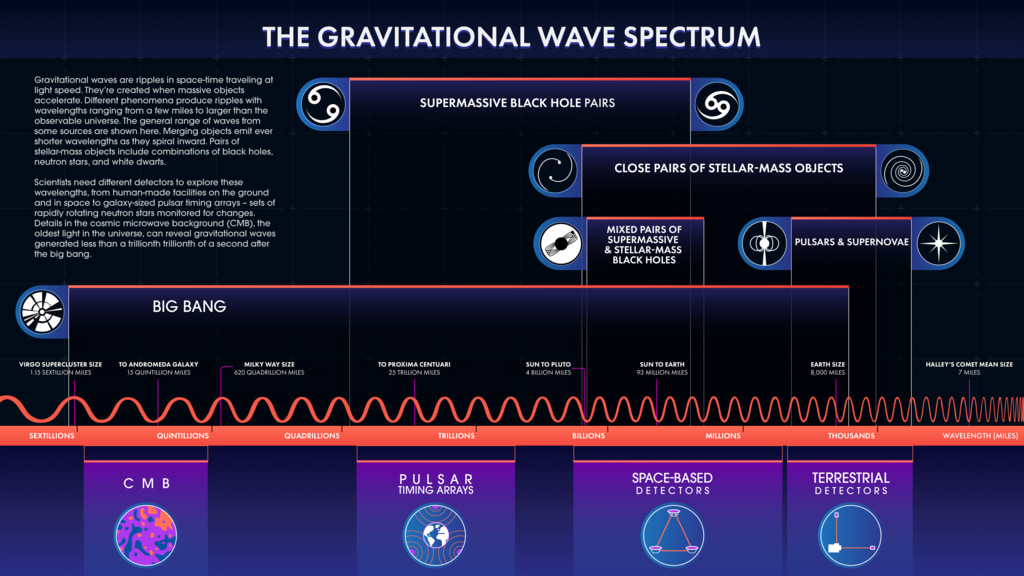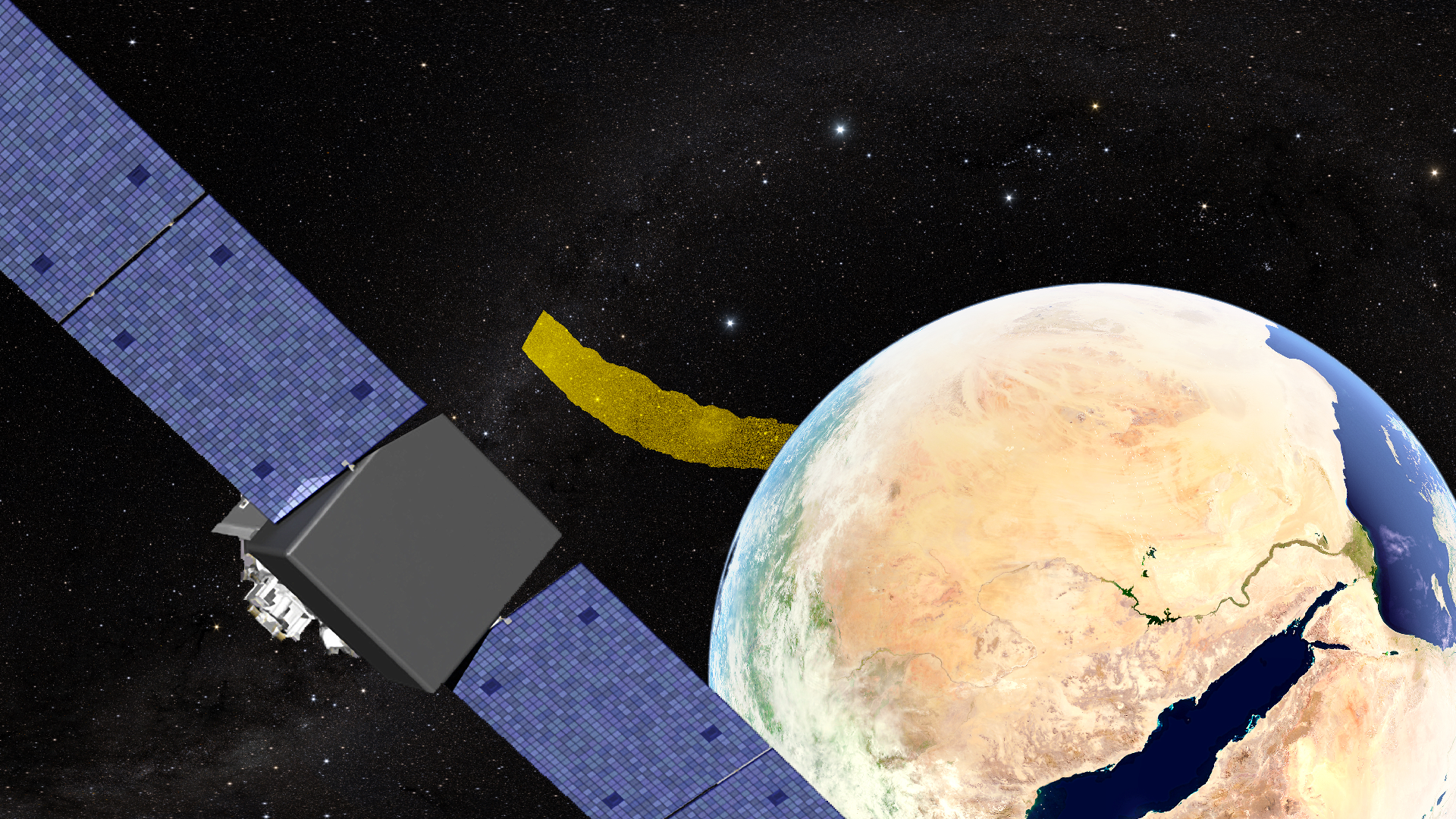Gravitational Wave Simulations of Merging Black Holes: 1080 and 8k Resolutions
Text-on-screen explainer of the above.
Credit: NASA/Bernard J. Kelly (Goddard and Univ. of Maryland Baltimore County), Chris Henze (Ames) and Tim Sandstrom (CSC Government Solutions LLC)
Complete transcript available.
This visualization shows gravitational waves emitted by two black holes (black spheres) of nearly equal mass as they spiral together and merge. Yellow structures near the black holes illustrate the strong curvature of space-time in the region. Orange ripples represent distortions of space-time caused by the rapidly orbiting masses. These distortions spread out and weaken, ultimately becoming gravitational waves (purple). The merger timescale depends on the masses of the black holes. For a system containing black holes with about 30 times the sun’s mass, similar to the one detected by LIGO in 2015, the orbital period at the start of the movie is just 65 milliseconds, with the black holes moving at about 15 percent the speed of light. Space-time distortions radiate away orbital energy and cause the binary to contract quickly. As the two black holes near each other, they merge into a single black hole that settles into its "ringdown" phase, where the final gravitational waves are emitted. For the 2015 LIGO detection, these events played out in little more than a quarter of a second. This simulation was performed on the Pleiades supercomputer at NASA's Ames Research Center. At maximum resolution this visualization is 8192x8192 pixels in size.
Credit: NASA/Bernard J. Kelly (Goddard and Univ. of Maryland Baltimore County), Chris Henze (Ames) and Tim Sandstrom (CSC Government Solutions LLC)

Animated gif of early stage of the visualization described above.
Credit: NASA/Bernard J. Kelly (Goddard and Univ. of Maryland Baltimore County), Chris Henze (Ames) and Tim Sandstrom (CSC Government Solutions LLC)

Animated gif of final stage of the visualization described above.
Credit: NASA/Bernard J. Kelly (Goddard and Univ. of Maryland Baltimore County), Chris Henze (Ames) and Tim Sandstrom (CSC Government Solutions LLC)

Still frame from the visualization described above.
Credit: NASA/Bernard J. Kelly (Goddard and Univ. of Maryland Baltimore County), Chris Henze (Ames) and Tim Sandstrom (CSC Government Solutions LLC)

Still frame from the visualization described above.
Credit: NASA/Bernard J. Kelly (Goddard and Univ. of Maryland Baltimore County), Chris Henze (Ames) and Tim Sandstrom (CSC Government Solutions LLC)

Still frame from the visualization described above.
Credit: NASA/Bernard J. Kelly (Goddard and Univ. of Maryland Baltimore County), Chris Henze (Ames) and Tim Sandstrom (CSC Government Solutions LLC)

Final still frame from the visualization described above.
Credit: NASA/Bernard J. Kelly (Goddard and Univ. of Maryland Baltimore County), Chris Henze (Ames) and Tim Sandstrom (CSC Government Solutions LLC)
Credits
Please give credit for this item to:
NASA's Goddard Space Flight Center. However, individual items should be credited as indicated above.
-
Science writers
- Francis Reddy (University of Maryland College Park)
- Jeanette Kazmierczak (University of Maryland College Park)
-
Visualizer
- Christopher E. Henze (NASA/ARC)
-
Scientist
- Bernard J. Kelly (UMBC)
-
Producer
- Scott Wiessinger (USRA)
Release date
This page was originally published on Tuesday, February 11, 2020.
This page was last updated on Wednesday, May 3, 2023 at 1:45 PM EDT.


